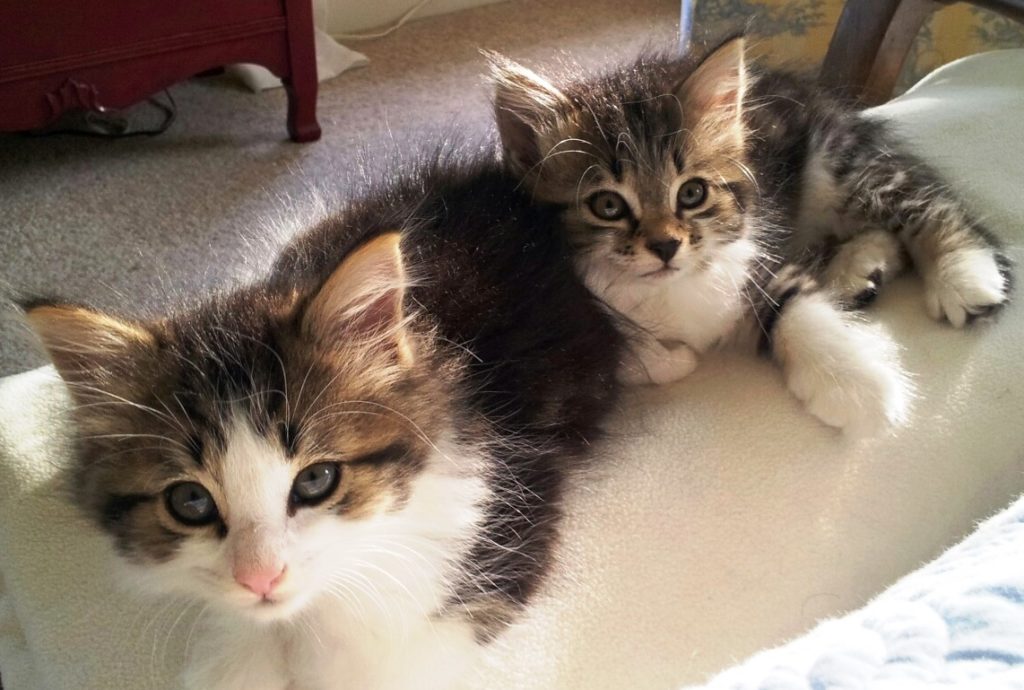
There’s a reason videos of puppies and kittens get so much traction on social media: We’re just drawn to them, to their cuteness and antics and smallness.
In real life, kittens and puppies are even more appealing. Kids may like small animals even more than adults do, being small and active themselves. Kids, like adults, can be awed by the miracle of new life.
While you’re enjoying the cuteness, new litters are also an opportunity to talk with little kids about how babies are conceived and grow, since the process for humans is much the same as for other mammals.
When Kids Ask
Your child may ask questions that open the door for you. For instance, “Where (or who) is the puppies’ daddy?” They may comment on how the mother cat or dog nurses the babies. They may wonder how the kitties got out of the mother, or how they got in in the first place.
Although you might be tempted to dodge the subject, I hope you won’t. Look at it as an opportunity to bring up important biology in a relaxed, organic way.
Say something matter-of-fact like, “It takes a mother dog and a father dog to make puppies. When they mate, the father dog puts sperm into the mother dog’s uterus, which is the place inside her where puppies grow. The mother has something called ova inside her. When the sperm and the ova come together, they combine, and over a few months, puppies grow. When the puppies are big enough, they come out through a special opening in the mother and are born.”
Then, assess where your child is at. That may be all they want to know at the moment. In that case, you’ve introduced important information you can cycle back to some other time. Or they may have other questions, which you can do your best to answer. If your child is very interested, you might even look up images of dog gestation online.
If your child seems to want to know more or if you’re feeling brave, make the bridge to human procreation. For instance: “By the way, people make babies basically the same way dogs do, except we usually have one baby at a time.”
Again, that may be enough for now, or your child may want to know more. If they’re curious, answer as calmly and truthfully as you can. It’s also a great time to buy or borrow a book you can read to them to fill in the gaps about human reproduction.
When You Want to Seize the Opportunity
But what if your child doesn’t ask? You can still take advantage of a natural opportunity to offer information about procreation.
You might ask your child what they think about the kittens and how they were created. Agree with any parts they get right, and gently clarify any parts they don’t understand. (“Oh, I can see why you might think that. But actually….”)
Or, you could mention the concept of conception and see whether your child picks up on it. “It’s really interesting how kittens get made, and puppies and human babies, too. We can talk about that sometime if you’d like.” Your kid may plunge right in with questions, or may return to the subject later. What matters is that you’ve shown it’s something you’re willing to talk about when they’d like to.
If You’d Rather Wait
Maybe you’re reading this thinking “I do not want to go there. Can’t I wait until they’re older to talk about all this?”
Well, of course you can wait if you want to. But I hope you won’t.
This is an awesome opportunity to get the birds-and-bees talk started in an easy, straightforward way. You can avoid the awkwardness of complicated things like why people choose to have sex, for instance, and still communicate really important information.
It’s actually much easier to talk about sex, even the human stuff, with littler kids. For them, it’s just facts about the world, without all the emotional baggage we adults may attach to anything related to sex. Trust me, the more you tell your kids about bodies, sex, and reproduction while they’re little (in small doses, over time), the easier more complicated conversations will be in the years ahead.
Even more important, you’re setting yourself up as a reliable source of information. When your kids know they can come to you with questions, they’re much less likely to look to unreliable sources like their friends and random internet sites. When you’re their go-to person on sexuality, you make sure they get accurate information in an age-appropriate way in a loving context.
Puppies and kittens aren’t exactly birds and bees…but they’re close enough to help you get the talk started.